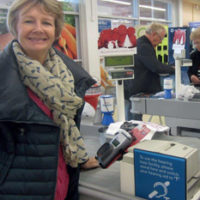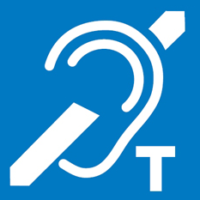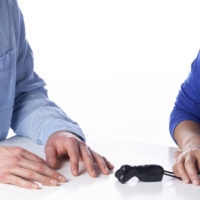Search results for: HEARING LOOPS
 Why should I provide a hearing loop for my service users? Not only are you required to by law, but it is also good customer practice. If you make your goods and services accessible to hearing aid users, you are likely to provide a better service to your customers and provide your business with an additional revenue stream. What type of hearing loop would I need? There are various loops for different applications; service counter hearing loops are different from...
Why should I provide a hearing loop for my service users? Not only are you required to by law, but it is also good customer practice. If you make your goods and services accessible to hearing aid users, you are likely to provide a better service to your customers and provide your business with an additional revenue stream. What type of hearing loop would I need? There are various loops for different applications; service counter hearing loops are different from...
 How do I know if my hearing aids are compatible? If your hearing aid has an obvious ‘T’ setting on the programme switch, then this is typically for selection of the loop function. With many hearing aids nowadays, there is no way of knowing by looking as to what programme options your hearing aid has – so ask your audiologist. Sometimes hearing aids may have a telecoil fitted but not enabled, your audiologist can ensure this is programmed for you....
How do I know if my hearing aids are compatible? If your hearing aid has an obvious ‘T’ setting on the programme switch, then this is typically for selection of the loop function. With many hearing aids nowadays, there is no way of knowing by looking as to what programme options your hearing aid has – so ask your audiologist. Sometimes hearing aids may have a telecoil fitted but not enabled, your audiologist can ensure this is programmed for you....
 Hearing loops can help you both at home and when out & about. Read our helpful section on hearing loops to learn how they work and how to use them....
Hearing loops can help you both at home and when out & about. Read our helpful section on hearing loops to learn how they work and how to use them....
 Hearing Link is currently conducting a pilot survey to get a better appreciation about the experiences people have when asking to use hearing loops in their local communities. Hearing loops are commonly installed in shops, banks, supermarkets and chemists to help hearing aid users improve the clarity of voice of the person talking from behind the counter. Unfortunately, there appears to be a wide variation in the quality of loops, leaving some people very frustrated with the experience and others...
Hearing Link is currently conducting a pilot survey to get a better appreciation about the experiences people have when asking to use hearing loops in their local communities. Hearing loops are commonly installed in shops, banks, supermarkets and chemists to help hearing aid users improve the clarity of voice of the person talking from behind the counter. Unfortunately, there appears to be a wide variation in the quality of loops, leaving some people very frustrated with the experience and others...
 ...for use with a hearing loop. These are found in many public places where you see the hearing loop sign (see right). Make sure that you ask your audiologist if your hearing aids can be programmed so that the ‘T’ setting is activated. This will mean you can use them with hearing loops in public places and with ‘hearing aid compatible’ landline phones. If your hearing aids don’t have a ‘T’ setting, ask about the best setting for telephone use. For mobile phones, you should ask how your mobile phone can connect wirelessly to your hearing aids as you can with...
...for use with a hearing loop. These are found in many public places where you see the hearing loop sign (see right). Make sure that you ask your audiologist if your hearing aids can be programmed so that the ‘T’ setting is activated. This will mean you can use them with hearing loops in public places and with ‘hearing aid compatible’ landline phones. If your hearing aids don’t have a ‘T’ setting, ask about the best setting for telephone use. For mobile phones, you should ask how your mobile phone can connect wirelessly to your hearing aids as you can with...
 ...It works by turning the sound source into a wireless magnetic signal that’s picked up by hearing aids or cochlear implants when they’re set to the ‘T’ (telecoil) setting. Using a hearing loop with the ‘T’ setting on your hearing aids can be useful in all kinds of situations, like on the phone (where it’s often called an inductive coupler) in your home (for example, to help you hear the TV) and in public places where you see the hearing...
...It works by turning the sound source into a wireless magnetic signal that’s picked up by hearing aids or cochlear implants when they’re set to the ‘T’ (telecoil) setting. Using a hearing loop with the ‘T’ setting on your hearing aids can be useful in all kinds of situations, like on the phone (where it’s often called an inductive coupler) in your home (for example, to help you hear the TV) and in public places where you see the hearing...
 ...is extended to residents in all four countries of the UK: Helpdesk run by volunteer responders with personal experience of hearing loss, Residential programmes for deafened people, and confidence and independence-building courses for people with any degree of hearing loss, Interactive website, providing a comprehensive set of factsheets on medical, technology and communication issues, with unique living-with-hearing-loss blogs and testimonies, Engagement and communication activities focusing on hearing loops and hearing awareness, rolled out in collaboration with Hearing Link groups and clubs and...
...is extended to residents in all four countries of the UK: Helpdesk run by volunteer responders with personal experience of hearing loss, Residential programmes for deafened people, and confidence and independence-building courses for people with any degree of hearing loss, Interactive website, providing a comprehensive set of factsheets on medical, technology and communication issues, with unique living-with-hearing-loss blogs and testimonies, Engagement and communication activities focusing on hearing loops and hearing awareness, rolled out in collaboration with Hearing Link groups and clubs and...